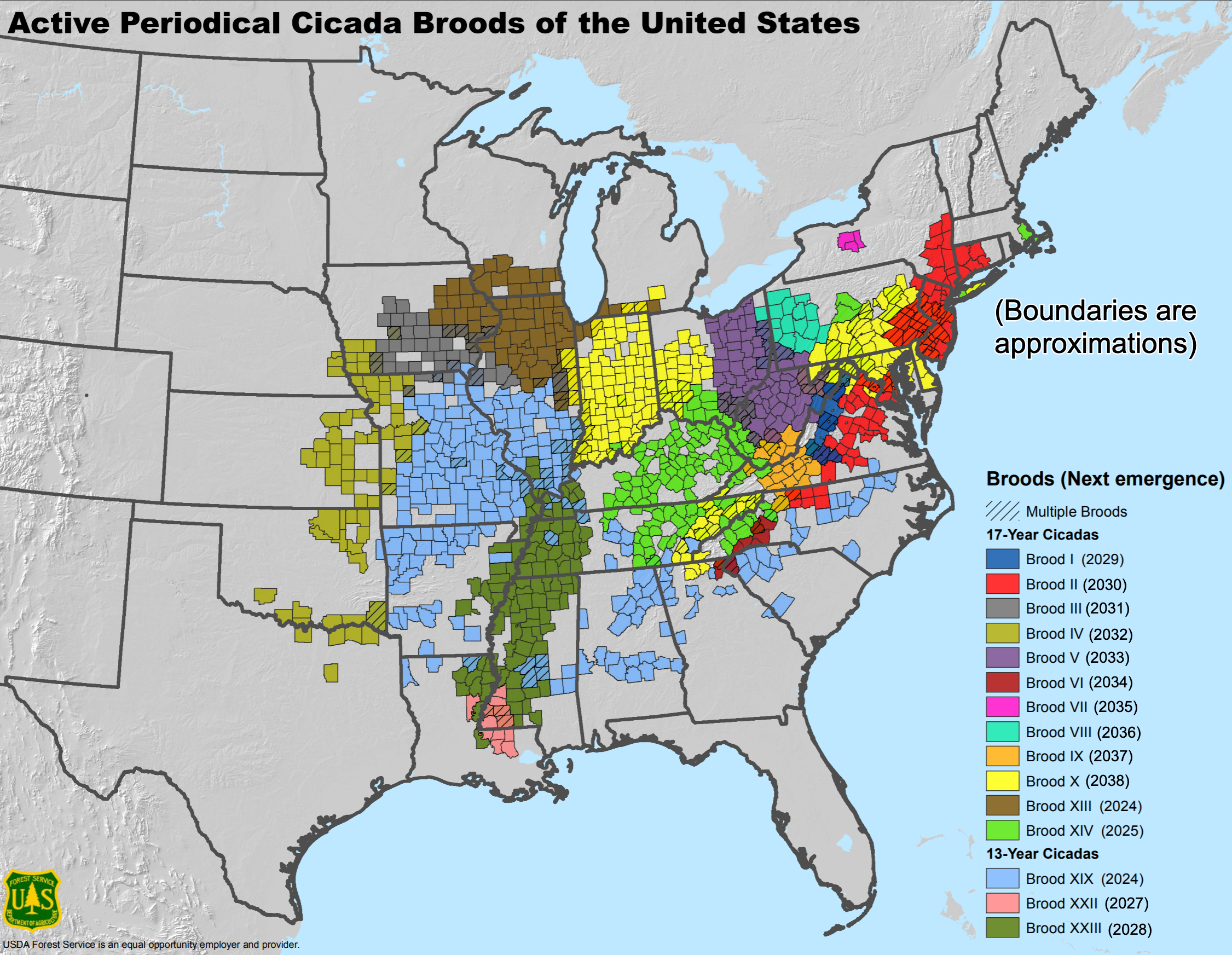2024 cicada brood map shows where cicadas will emerge in spring
Cicadas are somewhat bothersome creatures. They spend 13 to 17 years (depending on the brood) in the ground, eating away at the sugar found in the roots of trees. Then, after those years have passed, they emerge, grow wings, and make a ton of noise as they repopulate for a few weeks. The 2024 cicada broods are expected to emerge in spring, and this map can give you a good idea of where to expect these broods to show up.
Cicadas are mostly found on the eastern coast of the United States, though they can stretch as far central as the edge of Texas. This year, we’ll see two broods emerging from the ground: one 17-year group known as Brood XIII and a 13-year group known as Brood XIX. The number of insects is expected to reach into the billions when they emerge, so it’s likely to be quite a busy time when it happens.
The emergence of these two 2024 cicada broods together is a bit of a rare occasion, and NPR says that the last time these two emerged together was back in 1803, well over 200 years ago. If you’re curious about where these two broods might show up and whether you should prepare for thousands of dead cicadas after they’ve had their fun, a map put together by the U.S. Forest Services can help.
The map was shared via Wikimedia, and it showcases where each of the broods from 2024 and onward are expected to emerge, including those well into the 2030s. This gives you a good chance to take note of where Broods XIII and XIX will show up, though the U.S. Forest Service does say its boundaries are approximations.
We don’t understand a lot about these little creatures, including why they wait so long between being born and emerging. But we do know that they’re expected to show their loud, little faces this spring, and if you live somewhere the 2024 cicada broods will show up, you should probably be prepared for a hefty cleanup after their breeding cycle. We saw another massive flood of cicadas in the 2021 brood, but it was nothing like what we expected with this one.
Cicadas are somewhat bothersome creatures. They spend 13 to 17 years (depending on the brood) in the ground, eating away at the sugar found in the roots of trees. Then, after those years have passed, they emerge, grow wings, and make a ton of noise as they repopulate for a few weeks. The 2024 cicada broods are expected to emerge in spring, and this map can give you a good idea of where to expect these broods to show up.
Cicadas are mostly found on the eastern coast of the United States, though they can stretch as far central as the edge of Texas. This year, we’ll see two broods emerging from the ground: one 17-year group known as Brood XIII and a 13-year group known as Brood XIX. The number of insects is expected to reach into the billions when they emerge, so it’s likely to be quite a busy time when it happens.

The emergence of these two 2024 cicada broods together is a bit of a rare occasion, and NPR says that the last time these two emerged together was back in 1803, well over 200 years ago. If you’re curious about where these two broods might show up and whether you should prepare for thousands of dead cicadas after they’ve had their fun, a map put together by the U.S. Forest Services can help.
The map was shared via Wikimedia, and it showcases where each of the broods from 2024 and onward are expected to emerge, including those well into the 2030s. This gives you a good chance to take note of where Broods XIII and XIX will show up, though the U.S. Forest Service does say its boundaries are approximations.
We don’t understand a lot about these little creatures, including why they wait so long between being born and emerging. But we do know that they’re expected to show their loud, little faces this spring, and if you live somewhere the 2024 cicada broods will show up, you should probably be prepared for a hefty cleanup after their breeding cycle. We saw another massive flood of cicadas in the 2021 brood, but it was nothing like what we expected with this one.
